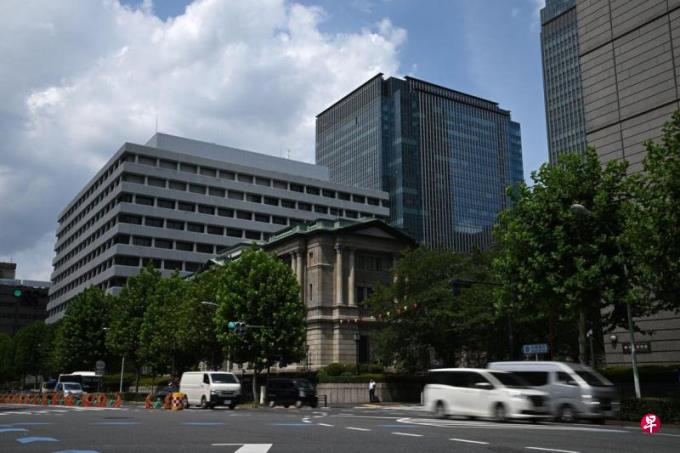
The Japanese drove their national spirit and culture -calm, restrained, orderly, and polite.However, the safety of Japanese roads is completely due to culture, and it is not completely fair.
Last weekend, drove to the Urcel detours. A RV came out of the parking lot from Testa Plaza and drove towards the author's car in the opposite direction.
The other party still seemed to have no intention to stop in front of him. The author stepped on the brakes subconsciously and pressed the flute. The other party stopped when the two cars were very close, but continued to enter.The author continued to press the flute and reversed twice. The other party wanted to drive back its own lane, but the lane has been blocked by a public bus.I don't know if the other party is nervous or unfamiliar with the situation. She actually hit the buses side. Fortunately, it just crashed and did not cause serious damage.
There is no way of knowing why the other party is driving in reverse. It is certain that the other party is a bit reckless. When the opposite car stops, he continues to enter, and finally bumps with the bus.
Those who often drive on the road must be aware that more and more people are driving reckless.Opening a newspaper or going to the community, the news and videos of car accidents seem to be increasingly frequent. It seems that every day there are heavy vehicles, including the bus accidents, including heavy vehicles.
May not be an illusion.According to the 2023 traffic accident statistics released by the Traffic Police in February this year, the last year's fatal car accident increased by 26% to reach the last year, reaching the year-on-year to reachFrom 131, it is a new high in seven years, and the number of deaths has increased by 25.9%year -on -year to 136.There are more injured car accidents, from 6,944, 8,931 were injured.
Although the number of traffic injuries increased by traffic accidents, Singapore's current roads are safer than five to 10 years ago.Throughout the data since 2009, Singapore died of a car accident every 100,000 people in 2010. This number continued to fall to 2.07 in 2019.Unfortunately, the number rose to 2.3 last year, higher than Hong Kong and Tokyo with the same place, but lower than other cities such as New York City, London, Sydney, etc.
1.7 people died in a car accident per 100,000 people last year, only 0.97 in Tokyo, and 2.14 nationwide in Japan.Like Singapore, 136 people in Tokyo died in a car accident last year; the difference was that the population of Tokyo was 14 million, which was nearly twice that of Singapore.
I traveled to Japan last winter, rented a car in Tokyo, and traveled to travel in the Kanto area.Unexpectedly, there is no pressure to drive in the metropolis in Tokyo. There are not many cars. On the other hand, everyone abides by traffic rules, and it is also very polite.Even if the author wants to see the direction slowly on the road, the back of the car will wait patiently without a flute or step on the accelerator.
However, there are several reasons that make people want to drive in Tokyo: one is that the parking space is very limited, the parking fee is very expensive, and the parking is very inconvenient. It is difficult to find a place to park on a place.It is not enough to operate in a limited time, and it is quite inconvenient to add fuel. The second is that the railway transportation network in Tokyo is too convenient. You can take rail transit everywhere, and even walking is a good choice.People rarely drive in Tokyo, and the chance of a car accident is naturally reduced.
Of course, this is not to say that Japan has no violation of traffic rules.On highways, many cars are speeding up.On the icing mountain road, some people played drift and saw the author frightened.
The overall feeling is that the Japanese drove their national spirit and culture -calm, restrained, orderly, and polite.However, the safety of Japanese roads is completely due to culture, and it is not completely fair.Professor Datong, a traffic expert in the Institute of Production Technology of the University of Tokyo, pointed out in the academic papers published in 2016 that in the post -war economic take -off, more and more people rushed and drove, and the national fatal car accident also increased rapidly. FromFrom 4,429 in 1951, it increased to 16,765 in 1970.
Since the end of the 1960s, various measures have been formulated to reduce car accidents, and to today become the safest country in global highways.
Many of the measures mentioned by Professor Dajingjing, Singapore is also doing, but several may be better.
Japan stipulates that all drivers must re -class every three years to update their driver's license.Those who have been deducted from car accidents or violated traffic rules must take additional courses in order to update their driver's license.Those drivers who have not been deducted within five years can apply for a validity period to five years when updating the driver's license, as a reward for outstanding drivers.
Regular class and update driver's license to some extent make certain troubles, which can help the driver pay more attention to their driving behavior.
At the same time, the law enforcement operations of the Japanese traffic police are more frequent.On the streets of Tokyo, an ingredient truck parked at the door of the restaurant unloaded, and the traffic police quickly appeared.
In addition to rules, another in Japan is worth learning that they put collective interests on individual interests, so they can sacrifice a little personal inconvenience for the safety of the overall society.Singaporeans need to build a better security culture, and I am afraid that it will take time to open it slowly.




